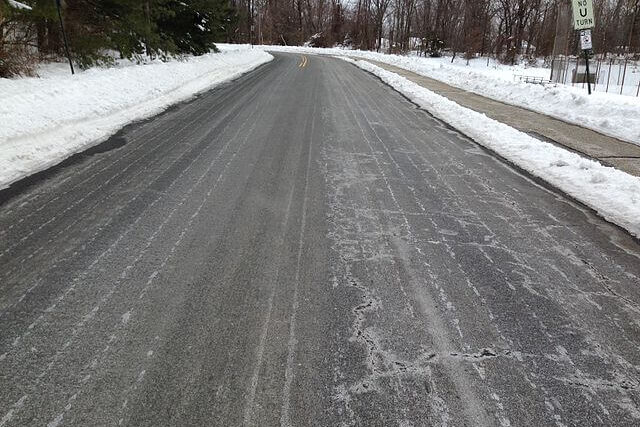
A recent scientific review reveals that the planet’s escalating demand for salt is taking a toll on the environment and human health.
The study, led by University of Maryland Geology Professor Sujay Kaushal and published in the journal Nature Reviews Earth & Environment, highlights how human activities are accelerating the natural “salt cycle,” posing potential existential threats if current trends persist.
Geological and hydrological processes contribute to surface salts over time, but activities such as mining, land development, agriculture, construction, and industrial processes are intensifying this cycle, causing widespread salinisation of air, soil, and freshwater.
“If you think of the planet as a living organism, when you accumulate so much salt it could affect the functioning of vital organs or ecosystems,” said Kaushal, who holds a joint appointment in UMD’s Earth System Science Interdisciplinary Center. “Removing salt from water is energy intensive and expensive, and the brine byproduct you end up with is saltier than ocean water and can’t be easily disposed of.”
The study introduces the concept of an “anthropogenic salt cycle,” illustrating the global, interconnected scale at which human actions influence salt concentration and cycling.
“Twenty years ago, all we had were case studies. We could say surface waters were salty here in New York or in Baltimore’s drinking water supply,” said study co-author Gene Likens, an ecologist at the University of Connecticut and the Cary Institute of Ecosystem Studies. “We now show that it’s a cycle—from the deep Earth to the atmosphere—that’s been significantly perturbed by human activities.”
Examining various salt ions found underground and in surface water, the researchers identify calcium, magnesium, potassium, and sulphate ions as some of the most abundant compounds. Elevated concentrations of these ions can lead to environmental issues, impacting approximately 2.5 billion acres of soil globally, equivalent to the size of the United States.
“When people think of salt, they tend to think of sodium chloride, but our work over the years has shown that we’ve disturbed other types of salts, including ones related to limestone, gypsum and calcium sulphate,” Kaushal said.
Over the last 50 years, streams and rivers have experienced increased salt ions, aligning with the rise in global salt production and use. Saline dust from drying lakes and aerosolised road salts in snowy regions add to the complexity of the issue, affecting air quality and ecosystems.
The study emphasises the “cascading” effects of salinisation, where salt ions bind to contaminants, forming harmful “chemical cocktails” that circulate in the environment.
“Salt has a small ionic radius and can wedge itself between soil particles very easily,” Kaushal said. “In fact, that’s how road salts prevent ice crystals from forming.”
In the United States, road salts contribute significantly to the problem, with 44 billion pounds used annually for deicing. Road salts represent 44% of U.S. salt consumption between 2013 and 2017, and 13.9% of total dissolved solids in streams, leading to substantial salt concentrations in watersheds.
The study calls for policies limiting road salts or promoting alternatives to prevent further salt inundation in U.S. waterways.
While acknowledging the importance of road salts in public safety, Kaushal emphasises the need to balance short- and long-term risks and explore alternatives.
“There’s the short-term risk of injury, which is serious and something we certainly need to think about, but there’s also the long-term risk of health issues associated with too much salt in our water,” Kaushal said. “It’s about finding the right balance.”
Some U.S. cities, including Washington, D.C., have adopted alternatives like beet juice for treating icy roads, which achieves the same effects with lower salt content.
The study’s authors advocate for the establishment of a “planetary boundary for safe and sustainable salt use,” akin to carbon dioxide levels associated with limiting climate change. Regulating salt levels presents unique challenges, but the study emphasises the necessity of addressing this issue to ensure both environmental sustainability and public health.
“This is a very complex issue because salt is not considered a primary drinking water contaminant in the U.S., so to regulate it would be a big undertaking,” Kaushal said. “But do I think it’s a substance that is increasing in the environment to harmful levels? Yes.”
——————————————————————————
At Natural World Fund, we are passionate about stopping the decline in our wildlife.
The decline in our wildlife is shocking and frightening. Without much more support, many of the animals we know and love will continue in their decline towards extinction.
When you help to restore a patch of degraded land through rewilding to forests, meadows, or wetlands, you have a massive impact on the biodiversity at a local level. You give animals a home and food that they otherwise would not have had, and it has a positive snowball effect on the food chain.
We are convinced that this is much better for the UK than growing lots of fast-growing coniferous trees, solely to remove carbon, that don’t actually help our animals to thrive.
This is why we stand for restoring nature in the UK through responsible rewilding. For us, it is the right thing to do. Let’s do what’s right for nature!
Donate today at https://naturalworldfund.com/ and join in the solution!

